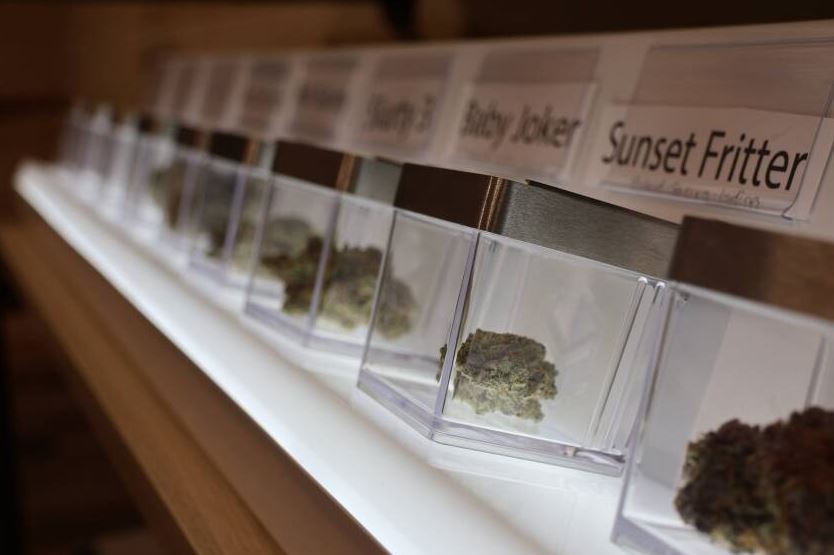Imagine living each day with a constant fear that, at any moment, your body might betray you. One second, you’re working or spending time with loved ones — the next, you’re unconscious on the floor, completely vulnerable. This is the daily reality for millions of people worldwide who live with epilepsy.
Although contemporary medicine offers numerous treatments, they are not always successful with everyone. Some individuals experience grave side effects, and many are left desperately searching for something — anything — that will help them get their lives under control once more.
Enter medical marijuana. In the past ten years, marijuana has become a highly effective, natural treatment for epilepsy, providing new hope to patients who had nearly lost last hope. Today, in 2025, the landscape of medical cannabis has continued to shift with highly advanced strains cultivated specially to minimize seizures and enhance quality of life.
In this detailed guide, we’ll identify the best medical marijuana strain for epilepsy, whether indica or sativa for seizures is better, and the best strains for epilepsy in 2025. By the end, you’ll be clear on why cannabis is revolutionizing how we approach epilepsy treatment.
Understanding Epilepsy and Its Challenges.
Epilepsy is a long-term neurological condition that generates repeated, unprovoked seizures. The seizures are abrupt bursts of electrical activity within the brain that interfere with normal brain function. They may have many different forms, from momentary lapses in awareness or muscle spasms to convulsions and loss of consciousness.
Epilepsy can occur at any age, although it usually starts in childhood or late adulthood. The World Health Organization states that approximately 50 million people worldwide have epilepsy, which ranks among the most prevalent neurological disorders.
The condition greatly affects daily living. For some, it involves relinquishing such activities as driving or swimming alone. Others may find it difficult to hold jobs, social relationships, or even simple independence. The uncertainty of seizures also causes anxiety and depression for most patients.
Conventional treatments center mainly on anti-epileptic drugs (AEDs). Although these drugs work for about 70% of patients, they have serious side effects such as fatigue, dizziness, mood alterations, and memory impairment. A small group of patients cannot be treated with any currently available AEDs due — drug-resistant epilepsy.
Other choices, such as surgery or nutritional therapies (e.g., the ketogenic diet), are available but not for all and can be risky. This fact has compelled patients and scientists to look for new, safer, and more natural treatment options, one of which is medical marijuana.
Medical Marijuana: How Does It Help with Epilepsy?
Cannabis has been used for medicine for thousands of years, but only in the last few decades have its possibilities for managing epilepsy been taken seriously. Its key to success lies in its chemical compounds known as cannabinoids, which engage with the body’s endocannabinoid system (ECS) — an intricate system that assists in balancing many functions, including brain functioning.
The two most recognized cannabinoids are cannabidiol (CBD) and tetrahydrocannabinol (THC).
CBD is a non-psychoactive substance, or it does not produce the “high” that is found with cannabis. Research has indicated that CBD is highly anticonvulsant and can decrease the severity and frequency of seizures. One of the most significant breakthroughs was that with the creation of Epidiolex, which is pure CBD oil approved by the FDA for specific severe epilepsy syndromes such as Dravet syndrome and Lennox-Gastaut syndrome.
THC, however, is psychotropic and has both positive and negative effects. In excessive amounts, THC will occasionally exacerbate seizures or induce anxiety. But in low, tightly controlled levels, it might act synergistically with CBD to increase overall efficacy — an effect called the entourage effect.
In 2025, the breakthroughs in breeding and cultivation have enabled accurate manipulation of these cannabinoids and other minor chemicals to produce what most refer to as the best strains for epilepsy today. The breakthrough has enabled clinicians to provide patients with strains that specifically target seizures without subjecting them to unwanted side effects.
Top Medical Marijuana Strains for Epilepsy in 2025.
When it comes to selecting the most effective medical marijuana strain for epilepsy, doctors and patients are faced with more choices than ever. Each strain has a distinctive cannabinoid and terpene profile that creates some strains being more impactful than others.
Charlotte’s Web.
Charlotte’s Web is, arguably, the most well-known epilepsy-centered strain globally. The strain was created specifically for Charlotte Figi, a child with Dravet syndrome who suffered between hundreds and thousands of seizures per week. Following the use of this low-THC, high-CBD strain, her seizures significantly reduced, triggering an international phenomenon of interest in using cannabis for the treatment of epilepsy.
Charlotte’s Web has approximately 17-20% CBD and below 0.3% THC, which means it is non-psychoactive and safe for daytime consumption. By 2025, breeders will have further perfected this strain to have higher purity and consistency in its CBD content, to become one of the most preferred strains for epilepsy.
ACDC.
ACDC is a high-CBD, low-THC strain also highly lauded for its seizure-easing abilities. With CBD content typically nearing 20% and THC content less than 1%, ACDC provides intense relief without mental confusion or psychoactive effects.
Patients describe feeling serene and concentrated, which is particularly useful for patients who prefer to maintain normal daily activities without disturbance. ACDC 2025 takes advantage of better genetics and better cultivation methods to become a top contender for anyone looking for the best medical marijuana strain for epilepsy.
Ringo’s Gift.
Ringo’s Gift has a well-balanced CBD: THC ratio, usually 20:1. This blend ensures that patients get the best of the entourage effect without feeling intense psychoactive effects.
Ringo’s Gift is best suited for individuals requiring seizure control with a slight feeling of relaxation and stress relief. Ringo’s Gift is still one of the top strains for epilepsy because it works well consistently and with mild therapeutic effects.
Harlequin.
Harlequin is a sativa-dominant hybrid with a reputation for inducing uplifting yet soothing sensations. With a general CBD: THC level of around 5:2, it provides mild seizure protection without enabling patients to become drowsy or detached.
This strain is good for use during the day and is preferred by patients questioning whether to use indica or sativa for seizures. Harlequin’s sativa-dominant nature makes it a perfect choice for people who do not want to be sedated during the day.
Remedy.
Remedy is a strain that has been specifically cultivated for high levels of CBD and low THC, sometimes even up to 15% CBD and almost no THC. That makes it ideal for patients who do not want any psychoactive effects whatsoever.
Remedy has a soothing, nearly sedative effect, and it’s commonly regarded as one of the best strains available for epilepsy in 2025.
New 2025 Exclusive Strains.
The cannabis field has gone a long way in strain development. In 2025, some new strains have been developed explicitly for epilepsy patients:
EpilepSafe 25: Developed with ultra-high CBD content and minute THC, this strain delivers firm seizure control with essentially no psychoactivity.
NeuroCalm X: With a special combination of CBD, CBG (cannabigerol), and soothing terpenes, NeuroCalm X delivers enhanced brain-soothing effects and is best suited for seizure triggers caused by stress.
SeizureShield: Equilibrium hybrid with maximum CBD and supportive minor cannabinoids, SeizureShield offers full-spectrum seizure relief and overall neurological wellness.
These new additions further widen the roster of the best medical marijuana strains for epilepsy, as patients are offered customized solutions built for maximum potency
Legal Status and Medical Consultation.
As hopeful as medical cannabis is, it’s essential to know the legalities. In 2025, a majority of countries and U.S. states have legalized medical cannabis, but every area has its regulations on which products are permissible, who can recommend them, and how they can be applied.
The majority of places need a doctor’s prescription for cannabis epilepsy treatment, particularly for strains with THC. In certain nations, only CBD isolates or preparations with low THC are allowed.
Everyone should consult a licensed physician before embarking on cannabis treatment. A skilled healthcare practitioner can guide them to the right strain, dosage, and method of delivery and watch out for side effects.
Self-treatment without medical oversight is hazardous, particularly for a condition as serious and multifaceted as epilepsy. Medical monitoring not only guarantees compliance with the law but also protects patients and achieves the best results.
Expert Opinions and Research Insights.
The medical establishment has increasingly embraced cannabis as a therapeutic for epilepsy, particularly with the availability of Epidiolex. Clinical trials continue to validate CBD’s efficacy in limiting seizure frequency, at times by as much as 50% or more in patients otherwise resistant to drugs.
In 2025, studies are also investigating whether certain strains — including whether indica or sativa, for seizures, are more effective — can produce greater outcomes. While CBD-dominant sativa strains such as Harlequin are favored for use during the day, indicas might treat patients who have issues with sleep disruptions and nighttime seizures.
Also promising are minor cannabinoids such as CBG and CBDV, which indicate that future strains may become increasingly targeted and effective at controlling seizures.
Specialists emphasize that treatment plans need to be extremely individualized since responses depend on genetics, types of seizures, and lifestyle. The most effective solution always comes as a customized one based on scientific evidence and professional monitoring.
How to Choose the Right Strain.
Selecting the ideal medical marijuana strain for epilepsy is of great importance:
CBD to THC Ratio: Most epilepsy patients fare better on high CBD and little THC to suppress seizure activity without psychoactive effects.
Terpene Profile: Terpenes may have a critical role in how a strain acts on the brain and body. Some terpenes offer relaxing effects, while others enhance alertness and concentration.
Source and Consistency: Use only lab-tested products from trusted dispensaries to avoid inconsistent cannabinoid levels.
Delivery Method: Vehicles such as tinctures, oils, capsules, and edibles enable controlled, exact dosing. Smoking or vaping is usually not recommended for medical patients.
Start Low, Go Slow: Start at a low dose and incrementally adapt as necessary under medical guidance. Keep a log to monitor seizure patterns, side effects, and general improvement.
By being cautious and well-informed, patients are able to discover the highest quality strains of epilepsy that suit their respective needs and lifestyle.
Conclusion.
2025 is a critical year in epilepsy treatment, thanks to ongoing breakthroughs in the research and implementation of medical marijuana and the creation of purpose-made strains. From Charlotte’s Web to the latest developments, such as EpilepSafe 25, patients looking for natural seizure control have more and better options than ever.
Deciding whether to use indica or sativa for seizures, what strains to use for epilepsy, and how cannabinoids affect the body all come into play when developing a customized treatment plan.
Medical marijuana is not a cure, but it represents a highly effective new weapon that can significantly enhance quality of life, decrease the number of seizures, and restore a level of control for individuals with epilepsy.
With professional expertise, continuous research, and a receptive mind, epilepsy patients are brighter than it has ever.




